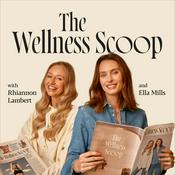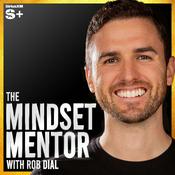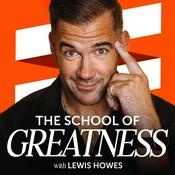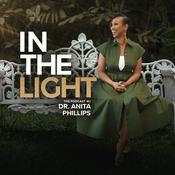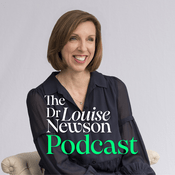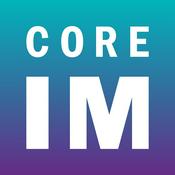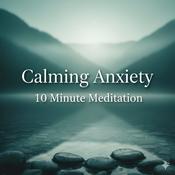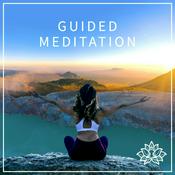333 episodes

Play is Not a Break: The Science of Learning through Chaos | Hayden Mitchell
2026/1/08 | 1h 17 mins.
Today’s guest is Hayden Mitchell, Ph.D. Hayden is a sports performance coach, educator, and researcher specializing in movement ecology and pedagogy, helping coaches design environments that support learning, resilience, self-actualization, and sustainable athletic performance through play and exploration. There is a great deal of conversation in sports performance around methods, including exercises, drills, systems, and models, but far less attention is given to coaching itself. Coaching methodology quietly shapes how athletes experience training, how they relate to challenge and failure, and ultimately how fully they are able to express themselves in performance. On the show today, Hayden speaks about exploring how coaching and physical education shape not just performance, but the whole human being. Hayden shares his path through sport, teaching, and doctoral work, including how life experiences changed his approach to leadership, control, and play. Together they discuss movement ecology, value orientations in coaching, such as mastery, learning process, self-actualization, social responsibility, and ecological integration, and why environment often matters as much as programming. The conversation highlights rhythm, joy, and exploration, along with practical ways coaches can use restraint, better questions, and playful constraints to help athletes own their development. Today’s episode is brought to you by Hammer Strength. Use the code “justfly20” for 20% off any Lila Exogen wearable resistance training, including the popular Exogen Calf Sleeves. For this offer, head to Lilateam.com Use code “justfly10” for 10% off the Vert Trainer View more podcast episodes at the podcast homepage. (https://www.just-fly-sports.com/podcast-home/) Timestamps 0:00 – Hayden’s coaching background 6:42 – Learning through experimentation 13:55 – Movement quality versus output 21:18 – Constraints based coaching 30:07 – Strength that transfers 39:50 – Variability and resilience 48:26 – Developing youth athletes 57:41 – Decision-making under fatigue 1:06:10 – Simplifying training programs 1:14:22 – Long term coaching philosophy Actionable Takeaways 6:42 – Learning through experimentation builds better coaches and athletes. Early coaching growth often comes from trying ideas, observing outcomes, and refining approaches. Allow room for trial and error in training rather than locking into rigid systems too early. Encourage athletes to feel and explore movement solutions instead of chasing perfect reps. Reflection after sessions helps clarify what actually transferred versus what just looked good. 13:55 – Movement quality creates the foundation for sustainable performance. Chasing outputs too early can hide inefficient movement strategies. Build positions, shapes, and rhythm before emphasizing max speed or max load. Use submaximal work to groove coordination and reduce compensation patterns. Improved movement quality often raises outputs without directly training them. 21:18 – Constraints guide learning better than constant verbal correction. Design drills that naturally guide athletes toward desired solutions. Reduce cue overload by letting the task do the teaching. Constraints promote adaptability instead of dependency on coaching feedback. This approach scales well in team settings with limited coaching bandwidth. 30:07 – Strength training should support movement, not replace it. Choose lifts that reinforce postures and force directions seen in sport. Avoid chasing strength numbers that disrupt rhythm or coordination. Use strength work to enhance confidence and robustness, not fatigue accumulation. Strong athletes still need to move well under dynamic conditions. 39:50 – Variability is a key driver of resilience. Expose athletes to multiple movement patterns and speeds. Avoid over standardizing drills to the point of robotic execution. Small variations build adaptability without sacrificing intent. Resilient athletes tolerate change better during competition. 48:26 – Youth athletes need exposure, not specialization. Prioritize broad skill development over early performance metrics. Multiple sports and movement environments improve long term ceilings. Avoid labeling young athletes too early based on temporary traits. Early diversity reduces burnout and overuse issues. 57:41 – Decision-making matters when athletes are tired. Fatigue reveals movement habits and decision quality. Train cognition alongside physical outputs when appropriate. Simple competitive games expose real world decision challenges. Performance under fatigue reflects true readiness. 1:06:10 – Simple programs executed well outperform complex plans done poorly. Clarity improves athlete buy in and consistency. Fewer exercises done with intent beat bloated sessions. Complexity should serve adaptation, not ego. Great programs are easy to repeat and sustain. 1:14:22 – Long term development requires patience and perspective. Short term gains should not compromise future potential. Progress is rarely linear, especially in young athletes. Coaching success is measured in years, not weeks. Build athletes you would want to train again in five years. Quotes from Hayden “Good movement solves a lot of problems before strength ever enters the conversation.” “When you design the environment well, you do not need to talk nearly as much.” “Outputs are easy to measure, but they are not always the most important thing.” “Variability is not chaos. It is preparation.” “Athletes who only know one solution struggle when conditions change.” “Young athletes do not need more specialization, they need more experiences.” “Strength should support expression, not restrict it.” “Simple does not mean easy. It means intentional.” “Fatigue exposes habits, not flaws.” “The goal is not just better athletes, but athletes who last.” About Hayden Mitchell Hayden Mitchell, PhD is a sports performance coach, educator, and researcher whose work sits at the intersection of movement ecology, pedagogy, and human development. He has coached and taught across a wide range of settings, from youth and collegiate sport to military, adaptive populations, and general fitness, working with ages 4 to 90. Hayden holds a doctorate in Human Performance and Sport Pedagogy and focuses on how environment, values, and teaching behaviors shape learning, resilience, and performance. His work emphasizes play, rhythm, and self-actualization, helping coaches and athletes move beyond rigid systems toward practices that develop both performance capacity and the whole human being.

496: Dustin Oranchuk on Isometrics, Force Production and Elastic Performance
2026/1/01 | 1h 13 mins.
Today’s guest is Dustin Oranchuk, Ph.D. Dustin is a sport scientist focused on sprinting biomechanics, speed development, and force production. Known for blending research with practical coaching insight, his work explores how isometrics, elasticity, and coordination shape high-performance sprinting and athletic movement. Isometric training is one of the “original” forms of strength training, and in the modern day has become one of the most popular areas of discussion and training methodology. Although the practice has exploded, it often lacks an understanding of physiology of adaptation with various methods. In this episode, Dustin explores the evolving world of isometric training, including the origins of isometrics. We discuss differences between pushing and holding contractions, tendon and neural adaptations, and modern applications in performance, rehab, and longevity. The conversation also dives into eccentric quasi-isometrics (EQIs), motivation and measurement challenges, and how coaches can intelligently integrate isometrics alongside plyometrics and traditional strength work. Today’s episode is brought to you by Hammer Strength. Use the code “justfly20” for 20% off any Lila Exogen wearable resistance training, including the popular Exogen Calf Sleeves. For this offer, head to Lilateam.com Use code “justfly10” for 10% off the Vert Trainer View more podcast episodes at the podcast homepage. (https://www.just-fly-sports.com/podcast-home/) Timestamps 0:11 – Strength Training Beginnings 5:38 – Evolution of Isometric Training 8:38 – Modern Applications of Isometrics 9:52 – Neural vs. Morphological Adaptations 15:45 – The Importance of Long Holds 19:42 – Combining Isometrics and Plyometrics 39:22 – Exploring Eccentric Quasi-Isometrics 47:10 – Periodization and Isometric Training 1:05:48 – Future Research Directions 1:13:00 – Closing Thoughts and Reflections Actionable Takeaways 5:38 Evolution of Isometric Training Overcoming isometrics originated as a way to target sticking points with high force. Early isometric systems emphasized position specific strength over movement. Modern usage has expanded beyond barbell sports into rehab and longevity. 8:38 Modern Applications of Isometrics Isometrics are now widely used to “own positions” across joint angles. Longer duration holds are frequently used for tissue health and rehab. Training intent has shifted from peak strength toward durability and resilience. 9:52 Neural vs. Morphological Adaptations Short range, position specific isometrics bias neural intent and coordination. Long muscle length isometrics bias hypertrophy and tendon adaptation. Choose isometric type based on whether the goal is performance transfer or tissue change. 15:45 The Importance of Long Holds Tendons require relatively high intensity to meaningfully adapt. Long holds help reveal side to side asymmetries and control deficits. Extended holds build tolerance and confidence in vulnerable joint positions. 19:42 Combining Isometrics and Plyometrics Pairing isometrics and plyometrics can produce modest additive benefits. Combining methods may reduce fatigue compared to doing each alone. The interaction may enhance effort quality rather than purely physiological output. 39:22 Exploring Eccentric Quasi Isometrics EQIs combine a maximal hold followed by forced eccentric lengthening. They accumulate large time under tension and eccentric impulse. EQIs are powerful but mentally taxing and difficult to sustain long term. 47:10 Periodization and Isometric Training Use longer, lower intensity holds earlier in the offseason. Progress toward shorter, higher intensity, position specific isometrics near competition. Post game isometrics can support recovery without additional joint stress. 1:05:48 Future Research Directions Measurement technology has driven the resurgence of isometrics. Push versus hold distinctions are becoming a key research focus. Future work aims to clarify muscle and tendon behavior during isometric intent. 1:13:00 Closing Thoughts and Reflections Consistency with foundational exercises drives long term progress. Isometrics are tools, not replacements for dynamic training. Coaches should match the method to the goal, not the trend. Quotes from Dustin Oranchuk “Tendons tend to need a certain threshold of intensity to get meaningful adaptations.” “The maximal amount of force you can push is almost always more than what you can hold.” “Isometrics let you own positions rather than just pass through them.” “Long holds are a great diagnostic tool for finding asymmetries.” “EQIs are effective, but they are very hard to push hard and regularly.” “Use the best tool for the job rather than trying to blend everything together.” “Consistency beats constantly reinventing your training approach.” “Isometrics compress joint motion so other systems can recover and adapt.” “Intent matters just as much as the muscle action itself.” “You do not need complexity to get strong adaptations over time.” About Dustin Oranchuk Dustin Oranchuk, PhD, is a sport scientist specializing in speed development, biomechanics, and force production in sprinting and jumping. He holds a doctorate in sport science and has worked extensively with elite athletes across track and field, team sports, and high-performance environments. Dustin is widely known for his research-informed yet practical approach to sprint mechanics, isometric training, and elastic performance, bridging laboratory insights with real-world coaching application. Through consulting, research, and education, he helps coaches and athletes better understand how force, stiffness, and coordination influence maximal speed and performance.

495: Kevin Secours on Rituals of Strength and Movement
2025/12/24 | 1h 18 mins.
Today’s guest is Kevin Secours. Kevin is a veteran martial arts coach, author, and former security professional with decades of experience across Japanese Jiu-Jitsu, Karate, and Russian Systema. Holding five black belts (including an 8th-dan), Kevin has worked extensively in real-world contexts while also teaching meditation, solo training, and strength rituals. He is the author of Rituals of Strength and Unconstrained, and is known for blending martial tradition, modern training theory, psychology, and philosophical inquiry into human development and resilience The conditioning and tempering of the body in striking sports can draw interesting parallels to collisions needed in jumping, sprinting and landing activities. We can also draw many lessons and ideas from the exercise tradition that goes back centuries with martial arts practice. By understanding combat training disciplines, we can draw out universal application for general movement and performance. In this episode, we explore the deeper purpose of physical training through martial arts and sport performance. Kevin reflects on early experiences with body hardening, cold exposure, and Zen-influenced practice, examining where such methods build resilience and where they become self-destructive. Drawing parallels to sprinting, jumping, and strength training, we discuss collisions, long isometric holds, ritualized discomfort, and fatigue as tools for cultivating awareness, reducing excess tension, and supporting longevity. Today’s episode is brought to you by Hammer Strength. Use the code “justfly20” for 20% off any Lila Exogen wearable resistance training, including the popular Exogen Calf Sleeves. For this offer, head to Lilateam.com Use code “justfly10” for 10% off the Vert Trainer View more podcast episodes at the podcast homepage. (https://www.just-fly-sports.com/podcast-home/) Timestamps 0:00 – Martial arts origins and body hardening 17:48 – Body tension, trauma, and reading the athlete 28:23 – Isometrics, Soviet methods, and slow strength 33:58 – Journaling, drawing, and learning through reflection 45:02 – Mindset, adaptability, and mental speed 56:46 – Representativeness, ritual, and resilience 1:04:26 – Simplify versus deconstruct in training 1:12:25 – Microdosing discomfort and daily resilience 1:17:24 – Comfort seeking and modern training challenges Actionable Takeaways Martial arts origins and body hardening Extreme methods can build toughness, but unchecked intensity shortens longevity. Training should serve health and preparedness, not destroy the body you are trying to protect. Exposure must be progressive and intentional, not reckless. Body tension, trauma, and reading the athlete Chronic tension often reflects psychological history, not just physical limitations. Coaches should first understand an athlete’s motive for training. Creating a safe and inclusive environment allows tension to unwind. Exhaustion can reveal new movement options and reduce overthinking. Isometrics, Soviet methods, and slow strength Long isometric holds build physical strength and mental resilience. Slow strength exposes weak links that fast movement can hide. Discomfort creates space for reflection and adaptability. Training methods were shaped by harsher living conditions and necessity. Journaling, drawing, and learning through reflection Writing and sketching reinforce learning more deeply than words alone. Stick figures and simple drawings improve memory and understanding. Documentation is a form of legacy and long term learning. Mindset, adaptability, and mental speed Adaptability in movement reflects adaptability in thinking. Exposure to opposing viewpoints builds cognitive flexibility. Speed is as much mental as it is physical. Ego and rigid beliefs limit learning and performance. Representativeness, ritual, and resilience Not all training must look like competition to have value. Ritual builds consistency and meaning in training. Resilience is a universal quality that transfers across contexts. Training should include experiences where the athlete loses and adapts. Simplify versus deconstruct in training Simplify first to preserve the integrity of the whole movement. Deconstruct only when specific limitations appear. Always return to full movement patterns after isolation. End sessions with success to reinforce confidence. Microdosing discomfort and daily resilience Small daily challenges build long term mental toughness. Discomfort activates the neural centers tied to willpower. Ritualized discomfort is more effective than occasional extremes. Resilience can be trained deliberately and safely. Comfort seeking and modern training challenges Humans naturally seek comfort when it is available. Modern environments require intentional exposure to challenge. Training should balance safety, stress, and adaptability. Long term growth comes from controlled adversity, not avoidance. Quotes from Kevin Secours “Motive matters more than method. The why has to be bigger than the how.” “Repetition does not make perfect. You can be perfectly bad at something.” “Every technique is like a snowflake. No two are the same.” “Resilience is the most universal commodity you have.” “The greatest relaxation comes from exhaustion.” “Training should not be trauma.” “If you quit midway, you are more likely to come back.” “We are comfort seekers.” About Kevin Secours Kevin Secours is a martial arts coach and author focused on practical skill development, resilience, and real-world application of movement and combat principles. Drawing from decades of training and coaching experience, his work bridges traditional martial arts, modern performance thinking, and personal development. Kevin is known for clear teaching, depth of insight, and an emphasis on adaptability, awareness, and lifelong practice.

494: Quintin Torres on Reactive Strength and Applied Power Development
2025/12/18 | 1h 28 mins.
Today’s guest is Quintin Torres, a strength and performance coach specializing in Marinovich/Heus inspired training methods. With a background in martial arts, Quintin focuses on movement quality, coordination, and individualized methods that help athletes build strength that truly transfers to sport. So often in athletic development, it is only the “hard” or easily quantifiable qualities that we look to develop. Although these are vital, sport itself (even output sports) live “in between the cracks” of maximal outputs, and then movement quality. Training rarely looks to infuse a full spectrum of athletic qualities, yet programming such as that put forth by Marv Marinovich years ago, does capture many of these dynamics. On today’s show, Quintin and I explore the Marinovich nervous system training philosophy, contrasting “soft” qualities like reactivity, rhythm, coordination, and perception with traditional hard metrics such as max strength. We discuss why MMA has embraced these methods, the limits of barbell-centric programming, and the importance of observation, experimentation, and individualized coaching. The conversation emphasizes training transfer to sport, creativity, and maintaining athlete adaptability, longevity, and engagement beyond chasing isolated numbers. Today’s episode is brought to you by Hammer Strength and the Just Fly Sports Online Courses Use code “justfly10” for 10% off the Vert Trainer Use code “justfly20” for 20% off of LILA Exogen Wearable resistance gear at www.lilateam.com View more podcast episodes at the podcast homepage. (https://www.just-fly-sports.com/podcast-home/) Timestamps 0:00 – Quintin’s background and entry into nervous system training 6:18 – Why Marinovich methods resonate in MMA 10:04 – Soft qualities versus hard qualities in performance 16:11 – Assessment driven training and athlete context 27:05 – One on one coaching versus group models 31:41 – Training quality, group size, and real world constraints 40:12 – Foot strength, barefoot work, and bottom up thinking 1:13:09 – Strength without compression and alternative tools 1:25:55 – Manual resistance and simple coaching tools 1:27:41 – Teaching, sharing, and coaching philosophy Actionable Takeaways Nervous system training priorities Train soft qualities like rhythm, timing, coordination, and fluidity with the same intent as maximal strength. Recognize that many performance qualities cannot be easily measured, but still decide outcomes in sport. Do not confuse testing well in the weight room with performing well in competition. Why MMA accelerates innovation High consequences in MMA force athletes and coaches to evaluate training effectiveness honestly. One on one competition allows clearer cause and effect between training and performance. Customization is easier when the athlete’s output is fully visible and isolated. Assessment over templates Let observable movement qualities guide training choices rather than fixed programs. Consider genetic tendencies such as stiffness, elasticity, and coordination when designing training. Adjust tools and methods to the athlete instead of forcing athletes into a system. Soft and hard qualities integration Maximal strength still matters, but it should not destroy elasticity or coordination. Avoid becoming overly concentric dominant and losing reactive qualities. Balance force production with tendon health and nervous system adaptability. Group training realities Large group settings limit how much individual correction is possible. Use simple movements and constraints when training many athletes at once. Accept logistical realities while still trying to preserve movement quality. Foot and ground based training Treat the foot as a strong and adaptable structure, not a fragile one. Use harder surfaces and direct loading to stimulate neural input from the ground up. Understand that the feet heavily influence the nervous system and movement outcomes. Alternative strength tools Use flywheels, isokinetic tools, and manual resistance to reduce compressive stress. Achieve high neural drive without excessive spinal loading. Match resistance dynamically to the athlete’s output. Manual resistance and coaching feel Hands and simple tools can outperform expensive machines in many cases. Manual resistance allows precise matching of effort and intent. Coaching feel and feedback are critical skills, not outdated practices. Quotes from Quintin Torres “The primary difference is we prioritize the development of soft qualities just as much as hard qualities.” “We do not need you better at training. We need you better at your sport.” “Barbell does not equal maximal strength. It is just one tool on the force velocity curve.” “As the quantity of athletes goes down, the quality of training can go up.” “Your feet are not fragile. They are designed to take abuse.” “There is no strength machine better than your own hands.” “A lot of what people call talent is just qualities we do not know how to measure yet.” “Results matter more when the consequences are real.” About Quintin Torres Quintin Torres is a strength and performance coach with a deep background in mixed martial arts and combat sports. A former competitive MMA athlete, he specializes in nervous system–driven training methods influenced by the Marinovich system, emphasizing reactivity, coordination, and movement quality alongside strength. Quintin works closely with fighters and athletes to individualize training based on biomechanics, perception, and sport demands, helping them build resilient, adaptable performance that transfers directly to competition.

493: Joel Smith on 10 Keys to Athletic Longevity and Peak Performance
2025/12/11 | 1h 5 mins.
Today’s podcast is a solo episode on keys to athletic longevity and ability. This isn’t just a “stay strong as you age” show, but rather, speaks to principles of comprehensive embodiment of the movement and strength training process. Here I break down 10 core principles for true athletic longevity; physically, mentally, and creatively. Drawing from decades of coaching, training, and personal evolution, I explore why mastery of bodyweight skills, seasonal training rhythms, and “doing more with less” are essential as athletes age. I dive into the power of games, community, mythos, and ritual in keeping training joyful and sustainable, and explain how reflection, visualization, and a generalist mindset unlock deeper layers of performance. Whether you’re 18 or 68, I share a roadmap for staying explosive, engaged, and young at heart; so your training stops feeling like an obligation and starts feeling like an adventure again. Today’s episode is brought to you by Hammer Strength. Use the code “justfly20” for 20% off any Lila Exogen wearable resistance training, including the popular Exogen Calf Sleeves. For this offer, head to Lilateam.com Use code “justfly10” for 10% off the Vert Trainer View more podcast episodes at the podcast homepage. (https://www.just-fly-sports.com/podcast-home/) 0:03 - Introduction to Athletic Longevity 1:09 - Mastery of Bodyweight Strength 7:15 - Doing More with Less 14:48 - Beyond Output: The Joy of Training 33:28 - Working with the Seasons 41:15 - Community and Gameplay 43:04 - The Mythos of Training 54:06 - Reflective Practices for Growth 1:02:29 - Staying Young at Heart 1:05:21 - Conclusion and Training Opportunities Actionable Takeaways 0:03 – Introduction to Athletic Longevity You do not need elite performance goals to train like an athlete. Longevity principles apply to everyone. Frame training around sustaining abilities for life, not constantly chasing output. Use seasons of high intent and seasons of exploration to keep the body adaptable. 1:09 – Mastery of Bodyweight Strength Build a foundation through movements like single leg squats, pull-ups, handstands, and climbs. Treat bodyweight strength as both athleticism and self-care. Create challenges that force coordination, tension control, and awareness rather than raw force. Mastery comes from slow, deliberate practice, not grinding reps. 7:15 – Doing More with Less Minimal equipment forces the nervous system to solve problems instead of relying on machinery. Use odd objects, rocks, or simple setups to create organic strength tasks. The fewer the tools, the more your body must coordinate pathways and recruit fibers intuitively. Minimalism creates long term durability because it reduces stiffness from repetitive patterns. 14:48 – Beyond Output: The Joy of Training Training becomes richer when you stop chasing numbers and start chasing satisfaction. Explore environments that give you novelty, challenge, and a sense of discovery. Use activities like bouldering, trail running, or skill based strength tasks to reconnect with intrinsic motivation. Joy improves longevity by making training sustainable, not obligatory. 33:28 – Working with the Seasons Rotate training priorities with the seasons to avoid stagnation. Winter may prioritize hill sprints, rock climbing, or foundational strength. Summer may lean into elastic qualities, sprinting, and outdoor challenges. Seasonal shifts satisfy both psychology and physiology by adding rhythm to training. 41:15 – Community and Gameplay Seek out communities that support physical play: climbing gyms, pickup sports, outdoor groups. Games create natural variability and spontaneity that cannot be replicated in a weight room. Being around others elevates energy and brings back the competitive spark. Gameplay keeps you young because it connects challenge, emotion, and movement. 43:04 – The Mythos of Training Build a personal mythology around your process to make training more meaningful. Rituals, environments, and narratives help you commit long term. Your system does not need to be rigid to be powerful. It needs to resonate. Treat training as an evolving story rather than a strict set of prescriptions. 54:06 – Reflective Practices for Growth Use journaling, quiet walks, or cooldown reflection to understand how training is shaping you. Reflection strengthens the connection between intuition and programming. Regular evaluation prevents burnout because it keeps training aligned with who you are becoming. Know when a method has run its course so you can adapt before stagnation. 1:02:29 – Staying Young at Heart Regularly expose yourself to novelty to maintain athletic qualities and curiosity. Choose activities that make you laugh, struggle, or fail safely. Maintain low level sprinting and jumping year round to keep elasticity from fading. Staying youthful is a mindset supported by movement variety. 1:05:21 – Conclusion and Training Opportunities Mix structured training with open-ended exploration to become resilient. Create programs that align with your interests, not just performance metrics. Longevity is built from sustainable rhythms, not all out cycles. Choose training communities and methods that help you stay inspired. Quotes from Joel “Longevity is not about chasing numbers. It is about staying able.” “Minimalism forces your body to become smarter instead of stiffer.” “When you stop obsessing over the output, you rediscover the joy of the process.” “If you follow the seasons, your training stays fresh and your body stays adaptable.” “Gameplay brings out movement qualities you cannot coach in the weight room.” “Your training story matters. It keeps you showing up long after the numbers stop improving.” “Reflection is the anchor that keeps your training aligned with who you are becoming.” “Staying young at heart is as much a training strategy as it is a mindset.” About Joel Smith Joel Smith is the founder of Just Fly Sports, a leading education platform in speed, power, and human movement. A former NCAA Division I strength coach with over a decade of collegiate experience, Joel has trained athletes ranging from high school standouts to Olympians. He hosts the Just Fly Performance Podcast, one of the top shows in the sports performance field, and is the author of multiple books on athletic development. Known for blending biomechanics, skill acquisition, and creative coaching methods, Joel helps athletes and coaches unlock higher performance through elastic strength, movement literacy, and holistic training principles.
More Health & Wellness podcasts
Trending Health & Wellness podcasts
About Just Fly Performance Podcast
Listen to Just Fly Performance Podcast, Get Sleepy: Sleep meditation and stories and many other podcasts from around the world with the radio.net app
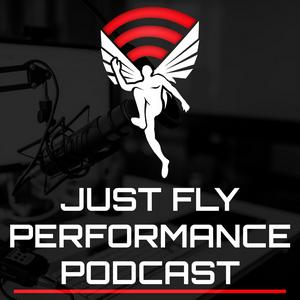
Get the free radio.net app
- Stations and podcasts to bookmark
- Stream via Wi-Fi or Bluetooth
- Supports Carplay & Android Auto
- Many other app features
Get the free radio.net app
- Stations and podcasts to bookmark
- Stream via Wi-Fi or Bluetooth
- Supports Carplay & Android Auto
- Many other app features


Just Fly Performance Podcast
download the app,
start listening.


